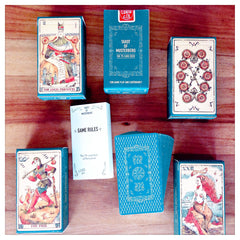What makes packaging work

When thinking outside the box just isn’t enough
Packaging designers, like burlesque performers, know that pulling off the wrapping as fast as possible isn’t always ideal.
Good packaging can help tell a story. Not only does it provide ample space to squeeze in a little more information about the product or company, but the process of opening a package can tell you how the company wants you to think about the product in general.
Take Apple products as an example. Each Apple product comes with multiple layers of packaging which gives you more to open. This way you feel as if there is more to the product and that you’re getting more for your money. A little manipulative, perhaps, but these stages also help build anticipation so that your appreciation of the product is greater once you have it in your hands. And in an industry where customers are primed to want disposable novelties, helping your customers appreciate what they’ve got sounds great.
However, the materials used in the packaging play just as big a role in developing feelings of appreciation for and value of the product. Those plastic ‘clam-shell’ style packages that take forever to open are not just frustrating, but really don’t feel good in your hands. The slick plastic is hard to grab and painfully sharp if you do manage to get it open. Plus, the fact that it’s so often molded to the shape of the product itself means that it seems like you’re holding it in your hands, but you just can’t get it – which obviously adds to the frustration. However, packages using materials that are more pleasing to the touch – textured paper or soft fabric – give us a better emotional connection to the product and make the actual opening of it more enjoyable and memorable over all.
Putting together the packaging for our reproduction of the Musterberg Tarot Deck, our main interest was in creating something that was archival-quality so that collectors could enjoy it for years to come. So we went with acid-free Munken Pure paper – the same paper used for the cards themselves. The paper is strong but light, so you won’t feel like you’re holding a brick, but rather something that you’d want to pick up again and again. To further protect the box, the paper was coated with a kind of cellophane to ensure the box would hold up to handling, but with a softness that you really will want to touch. The result is downright cuddly. (Seriously, why don’t all paper products use this?)
The best packaging is probably the kind you never get rid of. I know I’ve got a few packages that remain on the shelf although their innards are long gone. In the case of the Musterberg Tarot Deck, we hope you don’t lose the cards. But even if you do, we’re pretty proud of the box.